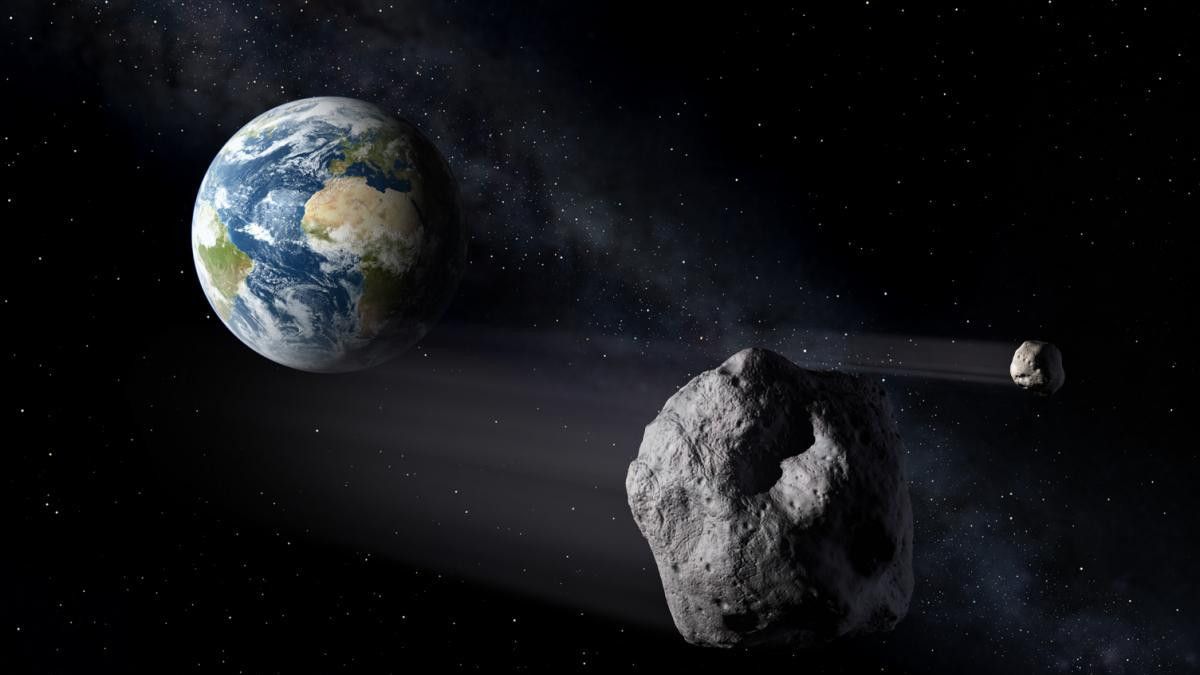JAKARTA - The NASA observatory is monitoring a giant asteroid that is expected to cross Earth. The size of this asteroid is the size of a football stadium with a diameter almost as high as the Empire State Building in New York.
Launching the Metro.UK page, NASA's Asteroid Watch Widget is tracking a number of asteroids and comets that are expected to cross the earth. Some of them will even pass at close range through the Center for Near Earth Object Studies (CNEOS).
Based on CNEOS data, one of the space objects that will be crossing Earth this weekend is the asteroid 2002 NN4. According to physics lecturer at Florida Gulf Coast University, Derek Buzasi, the size of the asteroid 2002 NN4 is larger than a football field with a cross section of about 335 meters in diameter.
In comparison, he compared the size of the asteroid to the Empire State Building in New York, USA. The skyscraper has a height of 426 meters to the top.
This asteroid is traveling at a speed of 32 thousand km / hour, which is chasing Buzasi if it hits the earth dangerous. Moreover, the current orbital trajectory of the asteroid 2002 NN4 is fairly close or a "close approach", so that it can be attracted by Earth's gravity.
Is it dangerous?Tomorrow, asteroid 2002 NN4 will SAFELY pass by Earth at a distance of approximately 3.2 million miles (5.1 million km), about 13 times farther away from the Earth than the Moon is. There is no danger it will hit Earth. Visit these FAQs for more: https://t.co/ZpllmEK77X pic.twitter.com/r3R0GrGaRb
- NASA (@NASA) June 5, 2020
With the size of the asteroid 2002 NN4 and its trajectory that approaches Earth. Of course it would be catastrophic, if the asteroid hit the planet we live in today.
But according to NASA predictions, the 2002 NN4 asteroid will only cross Earth with a distance of more than 4.8 million km. This means that the distance of this asteroid is 13 times farther from Earth to the Moon, where the path that the space rock will pass is only about 125 miles or 201 km.
"In short, NN4 2002 is a very well known asteroid with a known orbit that will pass through Earth at a very safe distance," said representative of NASA's Jet Propulsion Laboratory, Ian J. O'Neill.
Observations of asteroids such as 2002 NN4 are indeed quite worrying, let alone the potential impact if the space rock hits Earth. Even if it crosses and passes through Earth, an asteroid fragment of that size is still possible to cause damage.
Apart from 2002 NN4, NASA detected several other asteroids that will approach Earth. They are the asteroids 2020 KO1, 2020 KQ1, and 2020 LA. Fortunately, these extraterrestrial rocks are much smaller in size than the 2002 NN4 asteroid.
Some of these rocks from outer space have already crossed the Earth, such as the 2020 KO1 asteroid which crossed the Earth at 06.00 am EDT (17.00 WIB). Meanwhile, 2020 KQ1 at 12:39 EDT (23.39 WIB) will approach Earth from a distance of 0.03424 astronomical units or 3.2 million miles away.
Two other asteroids are expected to cross Earth, on Sunday 7 June. Among these are the space rocks known as 2020 KA7 and 2020 LA which will fly past the earth on Saturday 6 June at 2:16 a.m. EDT (Sunday 7 June at 01.16 WIB)
The English, Chinese, Japanese, Arabic, and French versions are automatically generated by the AI. So there may still be inaccuracies in translating, please always see Indonesian as our main language. (system supported by DigitalSiber.id)













